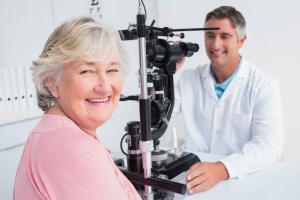Building a thriving optometry practice with a happy staff, positive culture, and loyal patients can be a challenge in a normal year. In the midst of the unprecedented COVID-19 pandemic, eye care professionals had to be quick on their feet to keep practices afloat, staff paid, and patients cared for.
2020 Best Practices Honorees Mark Kapperman, OD, of Kapperman, White & McGarvey in Chattanooga, TN, and Jennifer Zolman, OD, of Draisin Vision Group in Charleston, SC know that solid practice management is key to success.
While no one anticipated the pandemic and its impact on optometry, these practitioners are sharing how they are leading their practices through it all.
What was the biggest practice management challenge you faced as a result of COVID-19? How did you overcome it?
Zolman: Our greatest challenge has been making sure that we’re taking care of our team, ensuring everyone feels safe and connected. We worked hard to avoid any layoffs and have done everything we can to keep the culture positive by being empathetic to situations at home. During our closure, we held a retreat with virtual team-building activities, allowed remote work, and provided opportunities for professional development. Overall, the uncertainty of everything has been challenging—not knowing what will happen next, when we can schedule patients and in what capacity.
Kapperman: The inability to get everybody together for our regular staff and development meetings has been a challenge for us and has certainly impacted our culture. We have a large staff of 25 and it hasn’t been safe to gather all of us in a room. We’re working around it by communicating more often with the team using tools like Slack, and holding smaller team meetings. We’re also doing extra things to support the staff, such as all of the doctors cooking lunch for them.
What has been the biggest, most impactful change you’ve made to help sustain your practice during this time?
Kapperman: Social distancing and sanitization measures impact our capacity to see patients, but we have implemented pre-exam information gathering—a change that COVID-19 forced us to make but has been really beneficial for us. By the time patients walk in our door, they are ready to immediately start their exam because we have already collected background about their medications, health history, and chief complaints. It has significantly increased our efficiency, which helps us keep capacity much closer to normal.
Zolman: I have really focused on being a servant leader to my team and our patient base. I have looked at every angle and aspect of COVID to determine how best to keep everybody safe—and my staff paid. We are bending and shifting in ways we never would have thought before. It’s critical to be flexible to changes, and this has been a lesson in that.
Should there be another round of closures, what is one piece of advice you would offer to other practices to help them through?
Zolman: Make sure to stay on top of any opportunities you have for financial relief. Take care of your team, because if you can keep them with you through the tough times, it’ll be much easier to recover once you’re back. With layoffs, you’re basically starting over once you reopen because you have to rebuild and retrain. Also, if you’re closed, use time efficiently with education and other projects in the office. Look for alternate avenues to bringing in revenue, such as additional training and certifications or picking up a specialty.
Kapperman: The effect on your team should be your top priority. As businessowners, we try to make all decisions based on what is best for them—and their families. Respect and understand when they need to take time off to care for children or other family members, or for their health. It’s also important to plan ahead now to ensure you have funds in reserve for a crisis, just as you would with your personal finances.
Has your experience with the pandemic changed your view of optometry? Have you changed your approach to patient care as a result?
Kapperman: If anything, all of this has reinforced how important we are to the general public. There has been such a demand from patients to get in for an exam since reopening. Sometimes optometrists lose sight of how critical our services are to patients’ wellbeing. This has made me think independent optometry is here to stay, and I feel positive about our outlook. Providing exceptional patient care has always been our focus, and the core of what we do has not changed.
Zolman: This experience has absolutely demonstrated our value. We were instrumental in keeping people out of emergency rooms because of our ability to treat medical eye conditions, which shows the important role we play in the scope of care. Many patients have been very eager to get back in for their appointments for glasses and contact lenses—these services are essential to their lives. In regard to patient care, I still feel that we are a customer service business that happens to provide eye care. I find that we are even more empathetic to our patients now, as many of them want to talk about their work, kids, virtual learning, and other challenges. We are able to connect from a deeper human perspective—we’re all in this together. We feel even more like family than in the past.
3 Tips for Preparing for Crisis
Learn from your experience.
Be proactive instead of reactive. Now that you’ve been through this, what were the greatest challenges? What can you change now that would better prepare you for future obstacles?
Save, save, save.
Consult with your accountant or financial advisor to set up or enhance your emergency funds. While business is running “as usual,” set aside as much money as possible as a cushion for potential future closures.
Establish formal protocols for employees and patients.
When you have plans in place, you don’t have to scramble in times of crisis. Take the time to develop procedures for office closures and employee illness, while also establishing detailed guidelines for patients.
For more information about CooperVision’s Best Practices visit https://coopervision.com/practitioner/best-practices








